In the past, during the Fourth of July week, I’ve mixed things up and shared an individual photo series instead of focusing on a specific neighborhood. My first year was a collection of various flags spotted throughout the city. Last year, it was my handball project. This year, I’m sharing my project, A New Monumentality, an ongoing documentation of one of the country’s ubiquitous architectural typologies: self-storage facilities.
After all, what’s more American than buying so much stuff that you need to rent extra space to store it?
Though this project was never meant to focus solely on New York City, it turns out that nearly every neighborhood, especially in the outer boroughs, is home to these unmistakable monoliths built to house our excesses.
I unearthed the apocryphal origin story of self-storage while pursuing the surprisingly informative blog archives of various storage company websites.
According to legend, an “ancient Chinese man” named Xiang Lau had a collection of “rocks, bones, and other curiosities” that threatened to overflow the mud walls of his hut. His wife demanded he throw it all away. Xiang, deeply attached to his knick-knacks, instead crafted large ceramic pots and buried them underground, storing his collection safely out of sight. Neighbors took notice, and soon he was selling pots, digging holes, and turning a tidy profit burying their tchotchkes too.
The modern self-storage industry, with its rows of windowless steel boxes filled with unneeded armchairs, broken Barbie dolls, and laser printers (and probably a few rocks and bones), took off in Texas in the 1960s and has grown exponentially ever since.
Today, there are over 50,000 self-storage facilities in the United States, more than the combined number of Starbucks, Burger King, and McDonald’s franchises nationwide.
One in ten U.S. households currently rents a self-storage unit.
The Self Storage Association notes that it is “physically possible that every American could stand—all at the same time—under the total canopy of self-storage roofing,” which is taking things a little too literally, if you ask me.
Industry experts claim these spaces address the “Four Ds of life”: death, divorce, delimitation, and discombobulation. It’s a good thing storage units practically sell themselves, because even with a dictionary, I’m not sure what half of that means. And, it leaves out what is likely the single biggest factor in the industry’s explosive growth: the Fifth D, Depraved Spending.
Though the U.S. represents just 4.2% of the world population, it accounts for nearly 30% of global consumer spending. The average U.S. consumer purchases 68 items of clothing per year. IKEA, which uses 1% of the world's lumber, charges less for furniture now than it did 30 years ago. As goods have gotten cheaper, Americans have bought more of them, leading to a “crisis of overaccumulation.”
To contain all this excess, a new kind of architecture has emerged. The architectural equivalent of the spotted lanternfly, these “catacombs of consumerism”1 are everywhere.
A New Monumentality
In his essay Towards a New Monumentality, architecture critic Sigfried Giedion proposed a new conception of what makes a building a monument, suggesting that it should have a "clear and easily comprehensible form that expresses its underlying structure and function."
Self-storage facilities, with their color-coded corridors, corrugated metal walls, and yawning loading docks, fit that bill perfectly. Even the office spaces and factories repurposed into storage facilities with their painted facades and permanently obscured windows share a common design language of utility, uniformity, and invisibility.
Giedion wrote that monumentality "derives from the eternal need of people to own symbols to reveal their inner life and social conceptions." What better embodiment of that than these buildings, which serve as functional temples for our flat-screen TVs and exercise bikes?
These photographs focus on the standardized aesthetic of these structures and how the built environment both reflects and shapes our culture. They are the monuments of a society defined not by what it builds but by what it can’t bring itself to throw away.
NOTES
Interestingly, part of the proliferation of storage spaces is attributed to the decline of the American attic. A shift away from framing roofs with rafters to more affordable trusses has all but eliminated the usable storage space at the top of many modern house builds.
STORAGE WAR$, the reality show where people bid on the contents of abandoned storage units sight unseen at auction, is entering its 16th season. While I haven't seen the show, the 2015 documentary Finders Keepers looks right up my alley. The film follows Shannon Whisnant, who discovers a mummified leg in a grill he purchased at a storage auction and (naturally) sees it as his ticket to fame. The man who put the leg in the grill and then into storage in the first place, amputee John Wood, wants it back.
According to this New York Times article from last year, the demand for self-storage units is falling: Americans Went All-In on Self-Storage. That Demand Is Suddenly Cooling.
A fantastic article from 2009, The Self Storage Self (Thanks to
!)
https://slate.com/culture/2005/07/self-storage-in-america.html





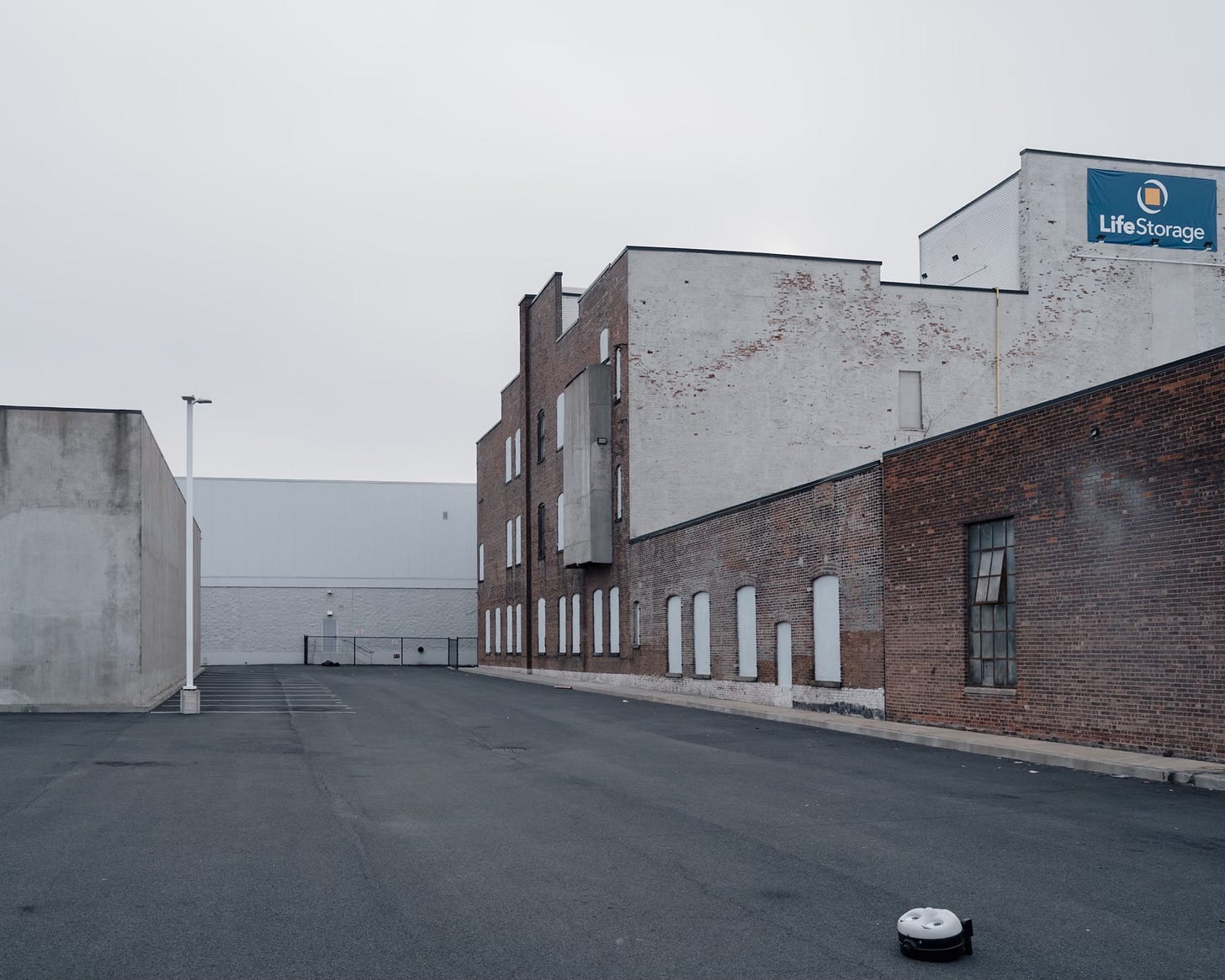

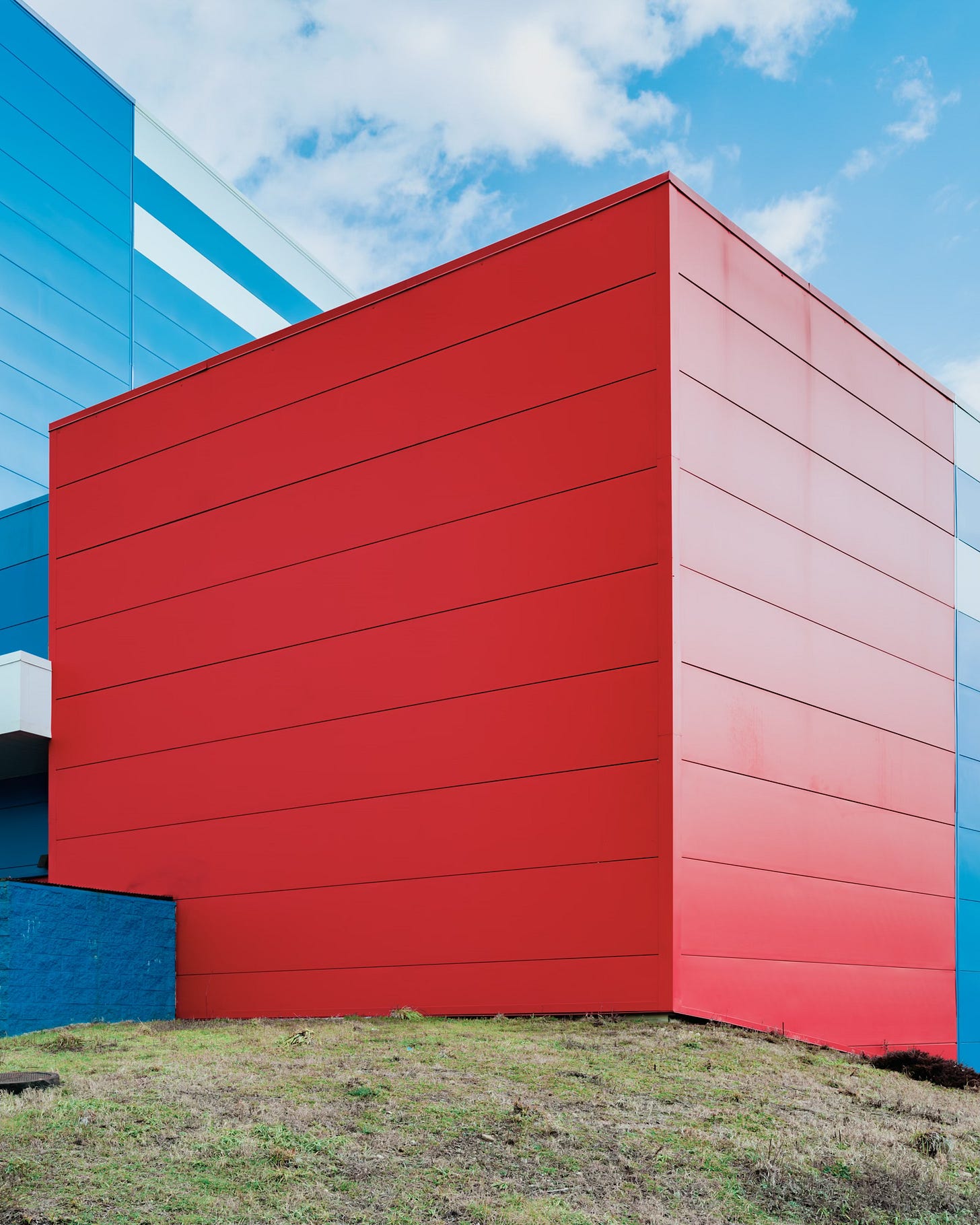
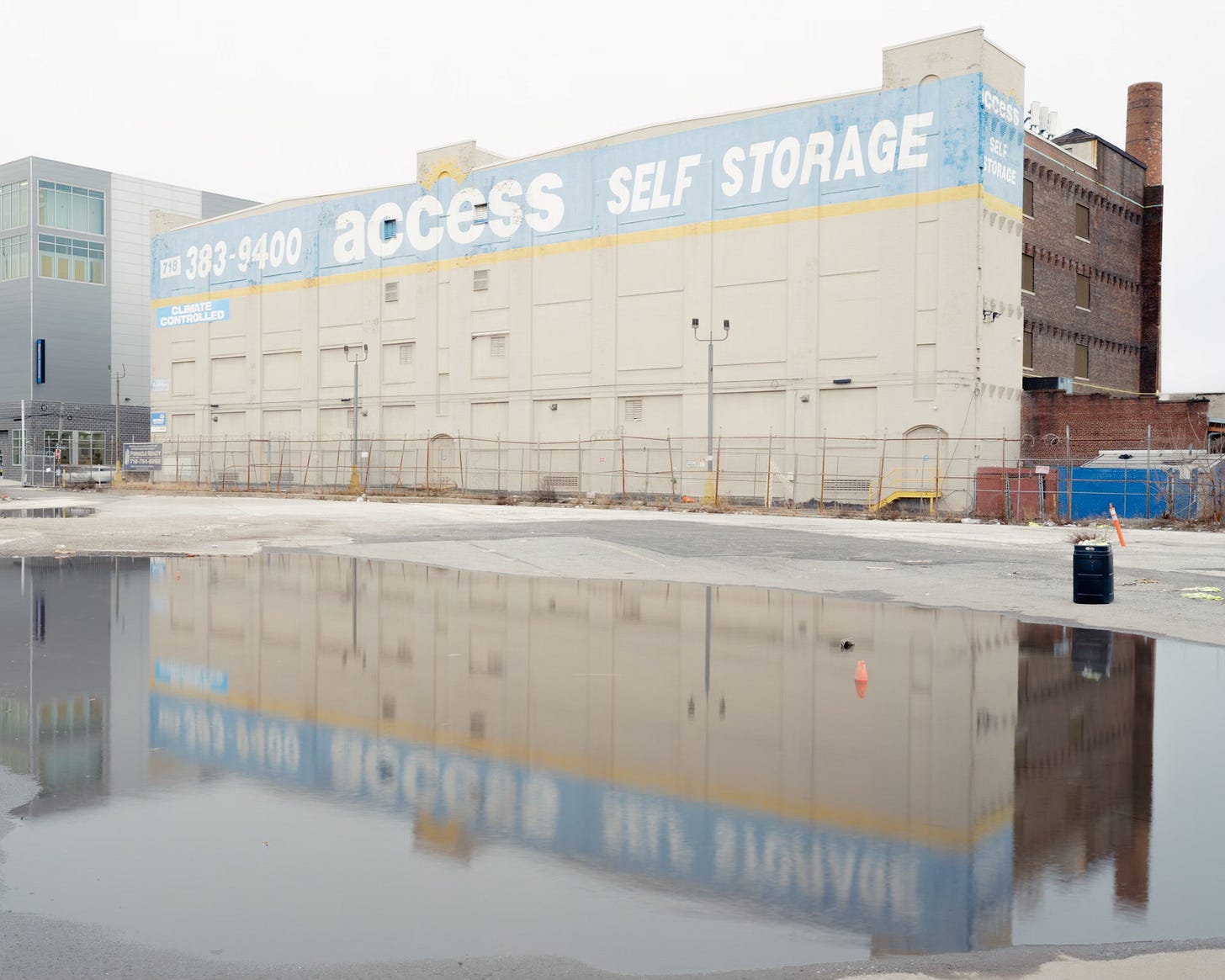
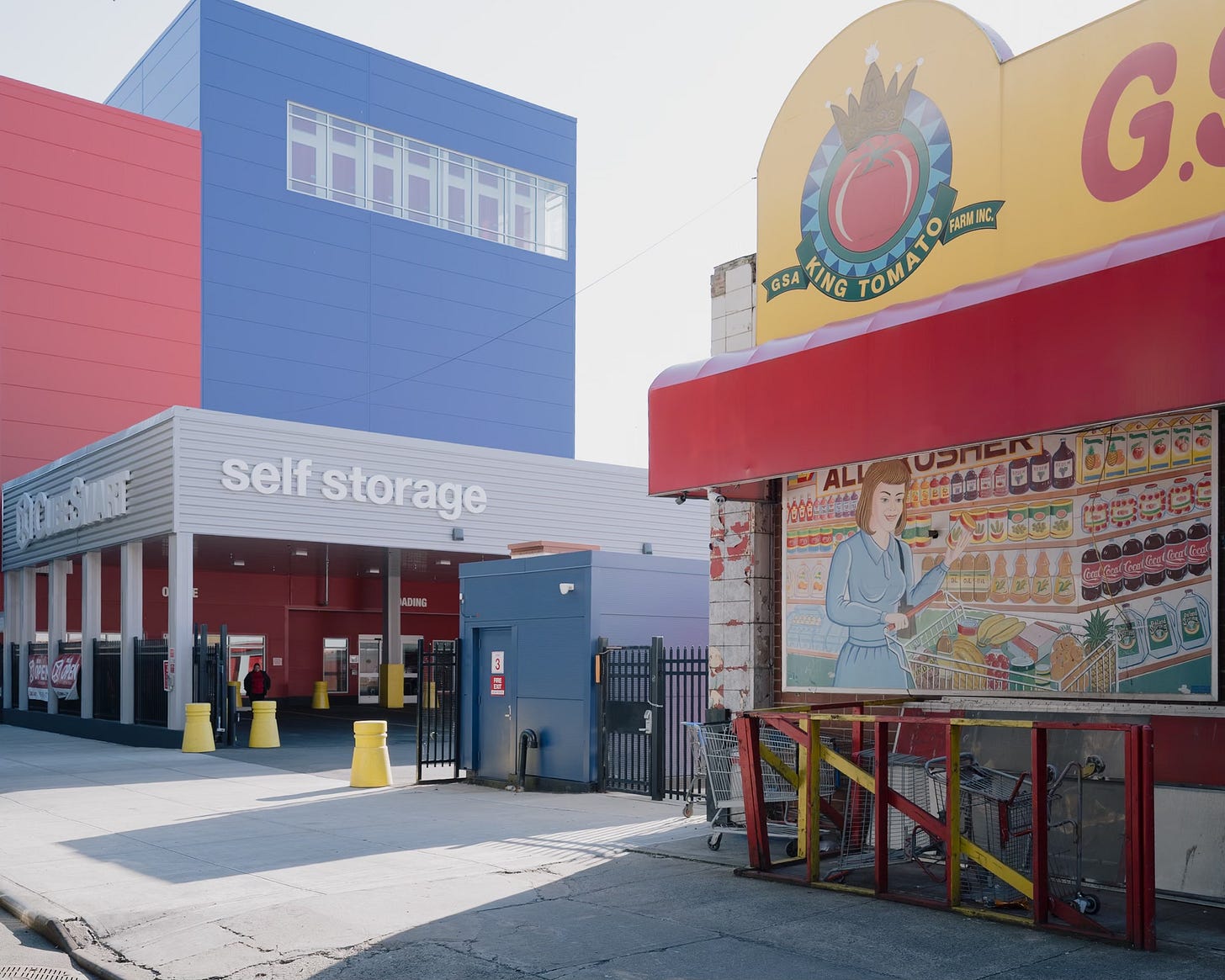
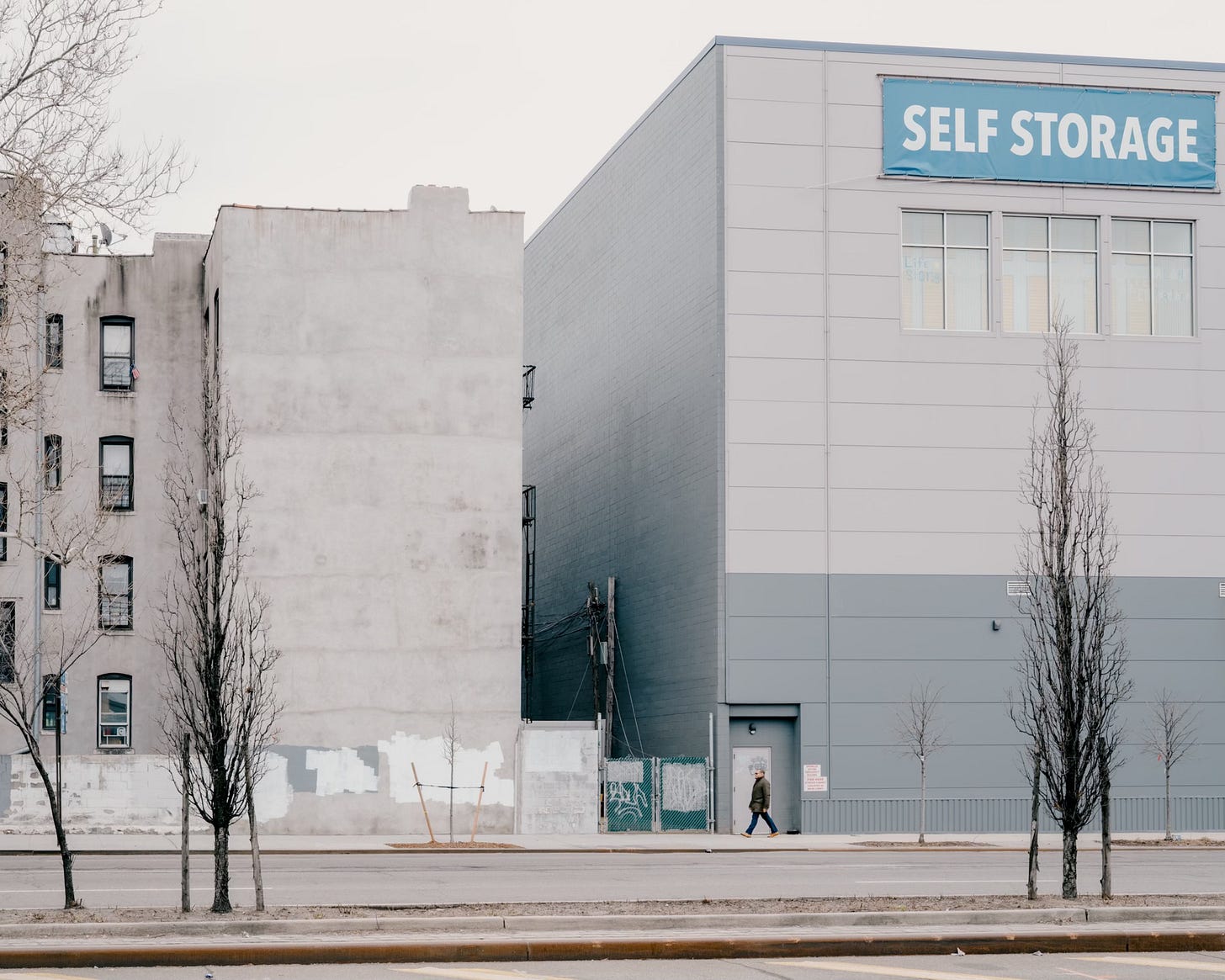
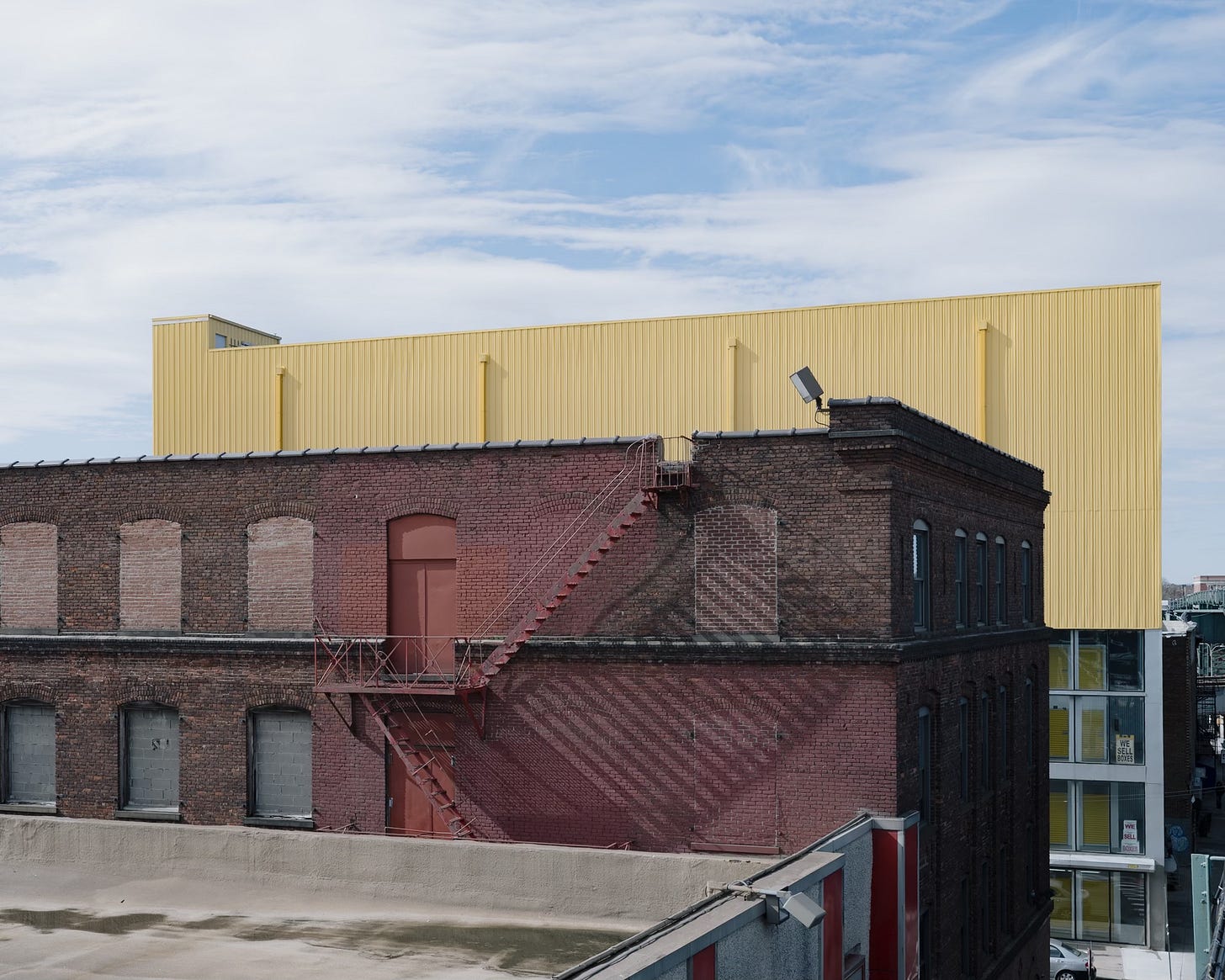
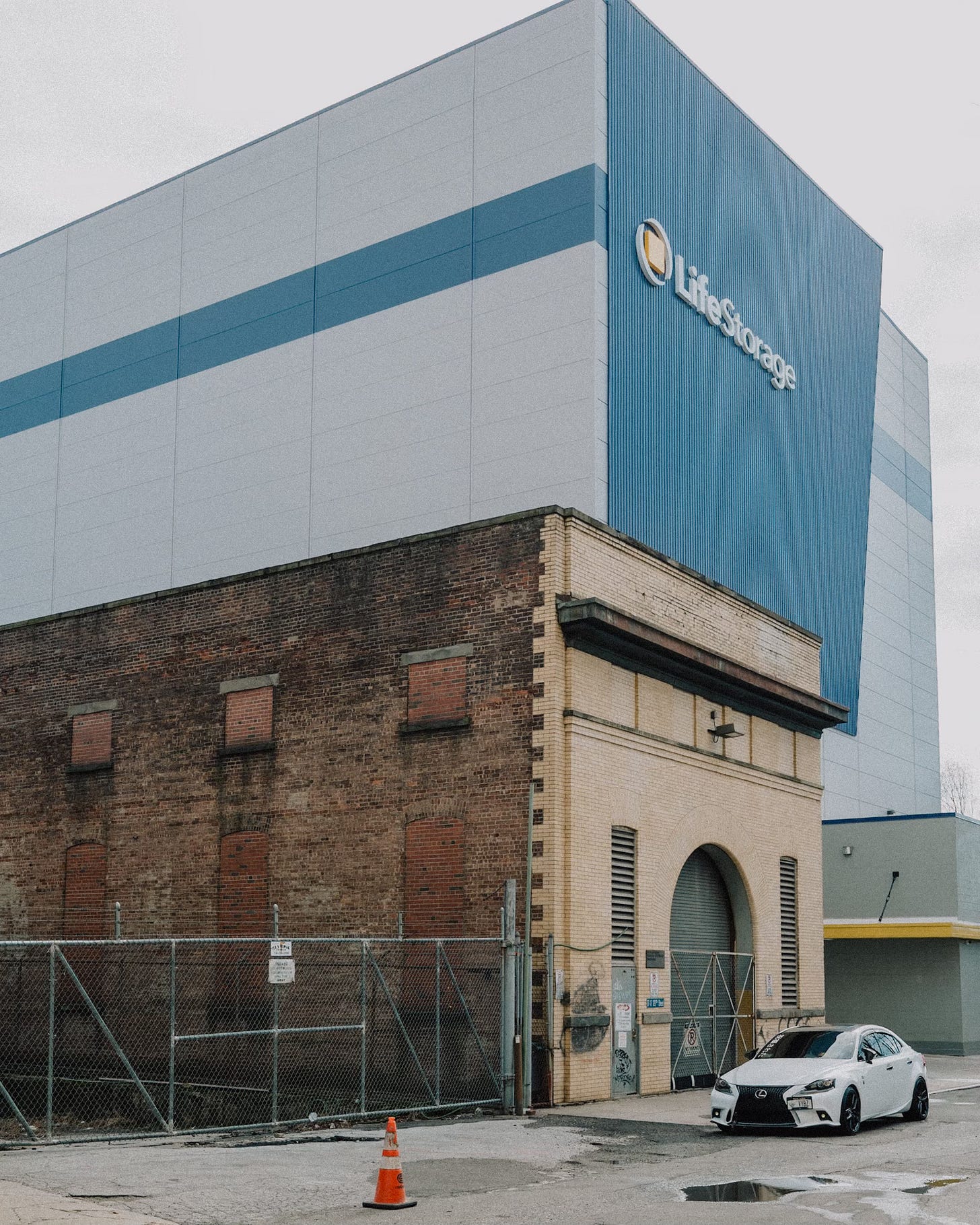
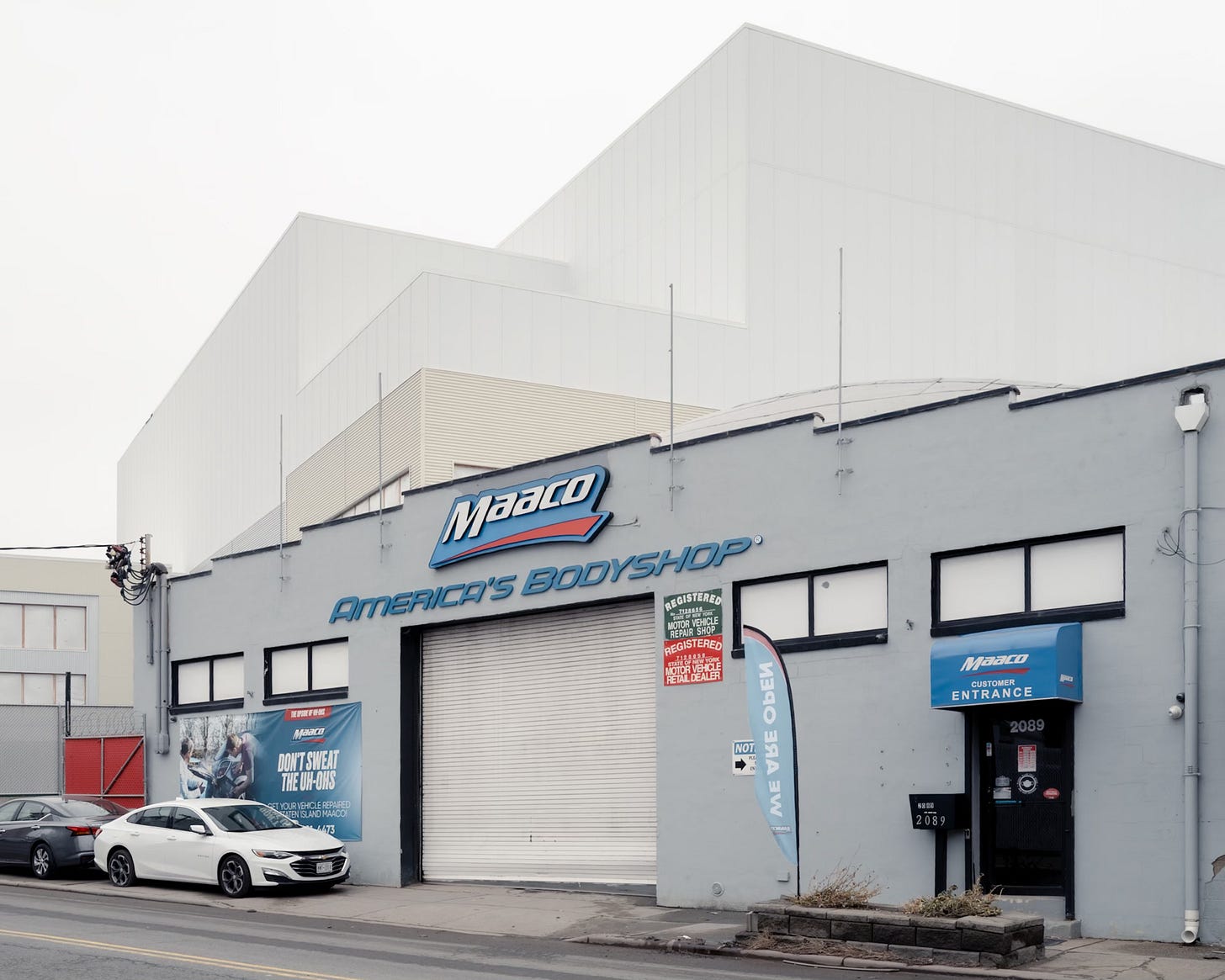
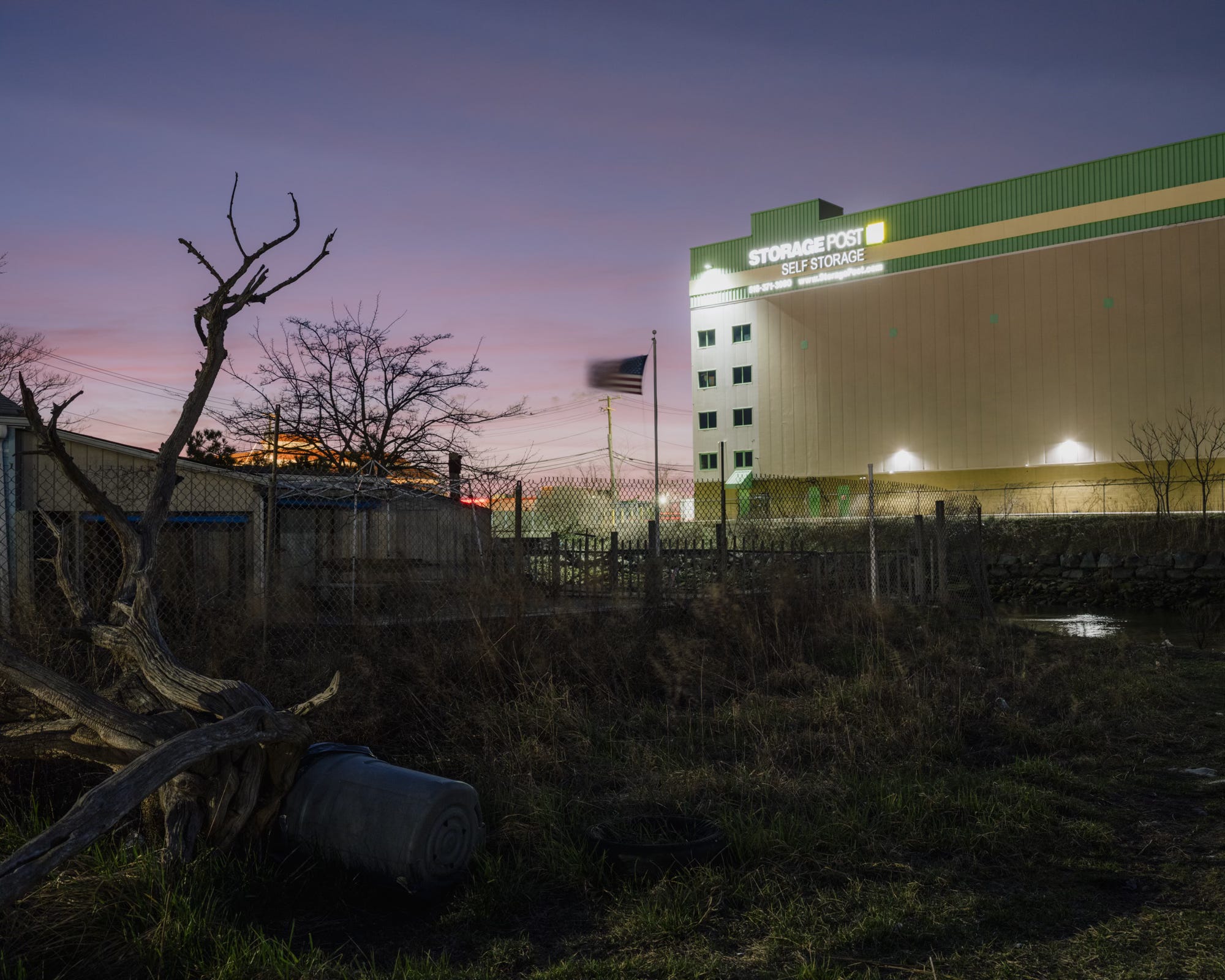

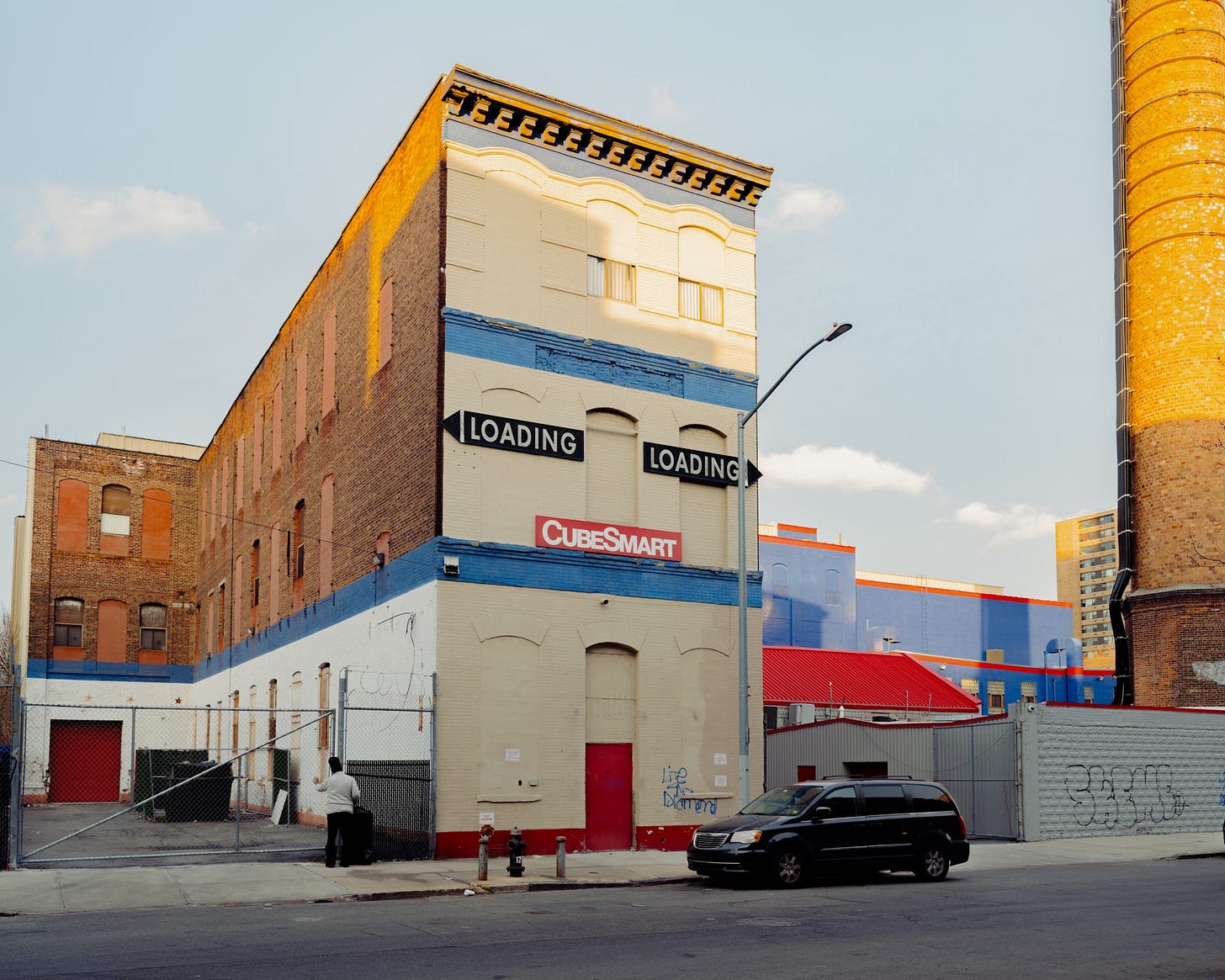

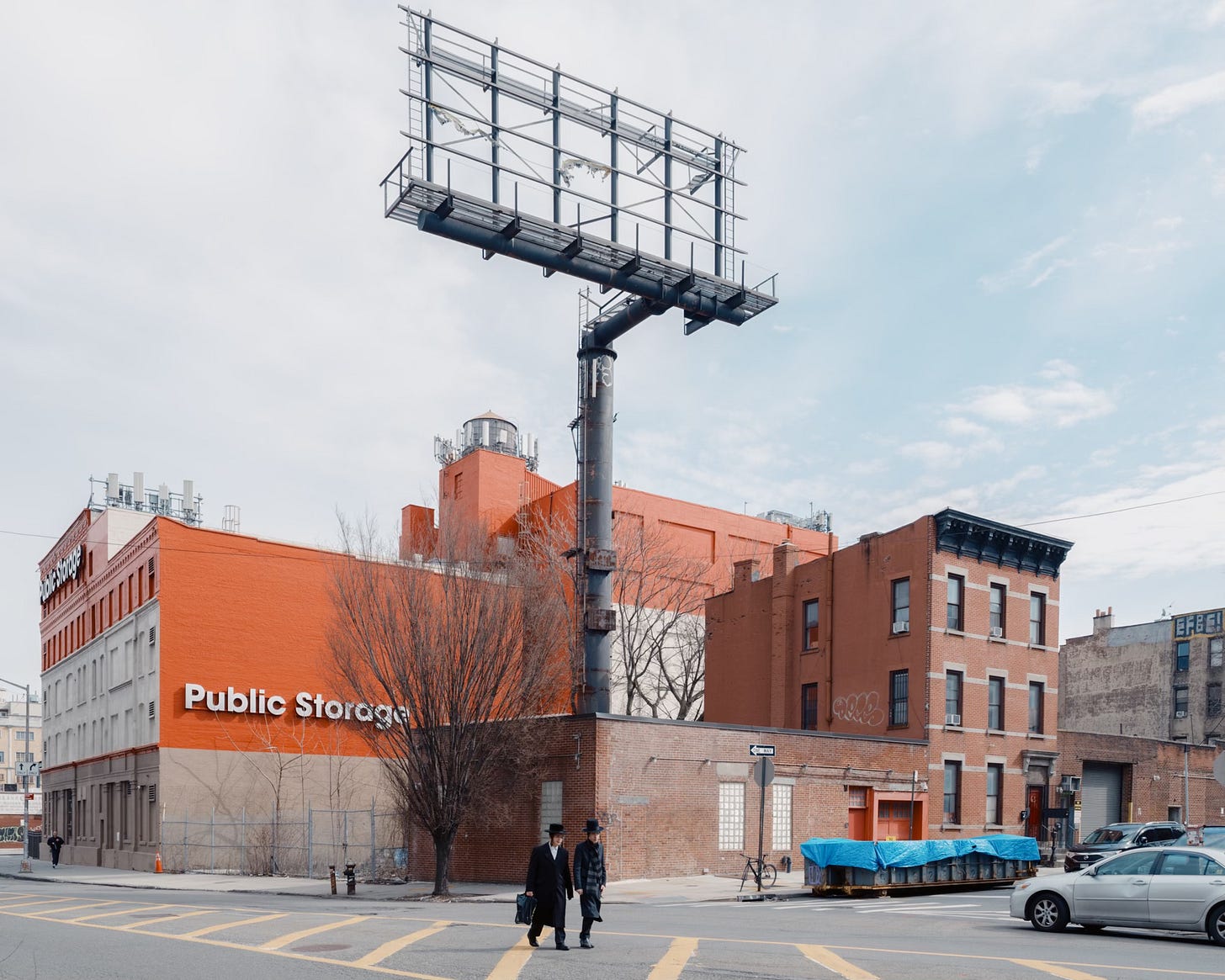
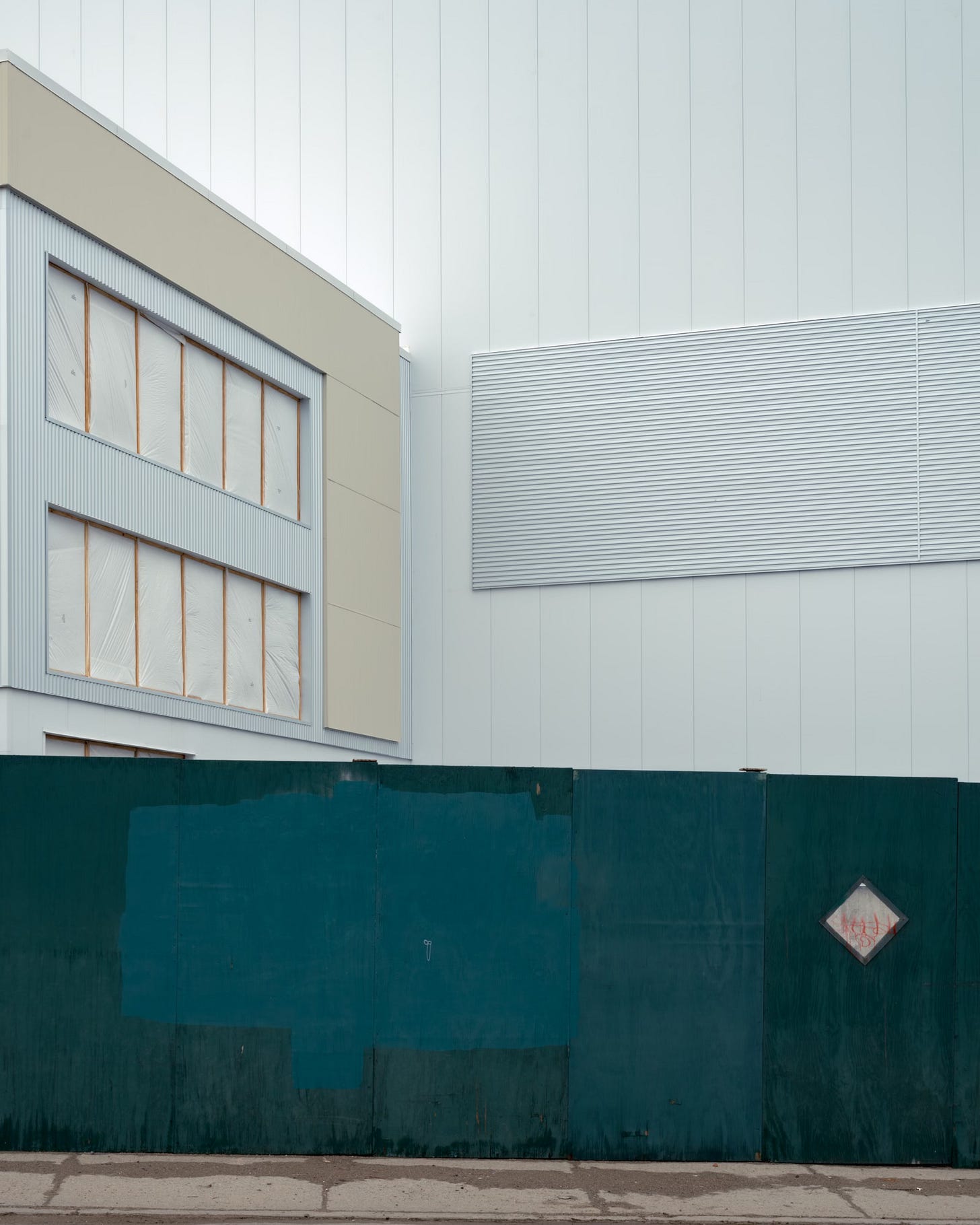
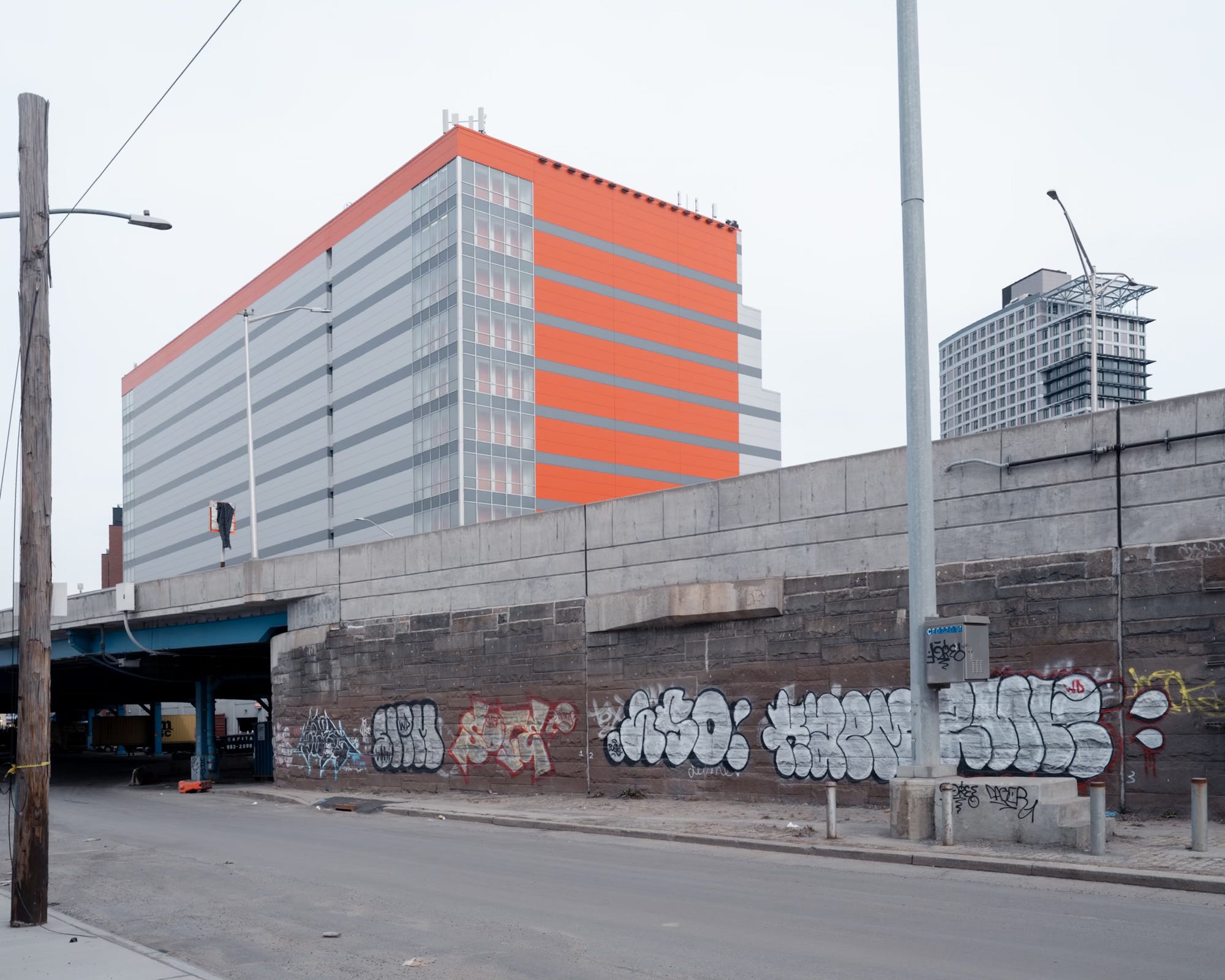

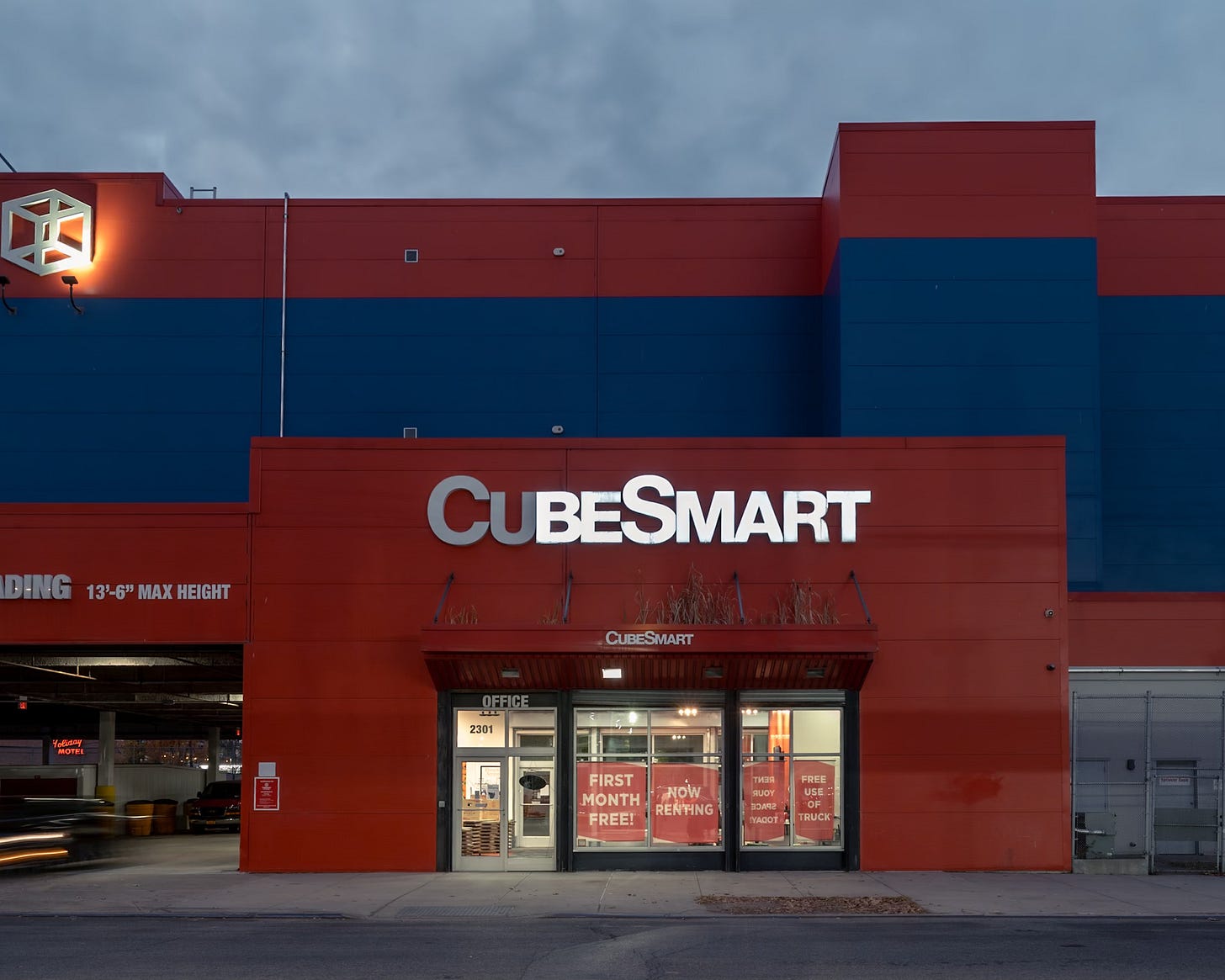


This is also a wealth disparity story, with the increase of storage facilities tracking the increase of homelessness, both because some homeless people can only afford to store their stuff, but also because American cities across the board are friendlier to building storage than building housing. In NYC this is literally, where in two high profile situations in recent years a community board has come out against housing being built, only for a CubeSmart to take it's place.
Love the post.
When my Gram died in her Inwood apartment, Mom couldn’t get herself to dump all the W & J Sloane furniture, so it went into a storage room. I added a nice Romanian rug that the cat had started to use as a scratch pad.
After ten years of paying the fees, Mom balked at going “to check the furniture” after a man was shot and killed by cops, right down the hall from her storage room. The man had been secretly living in a unit (fully furnished) until a guard called the police, thinking he was a burglar, and the police, um, over-reacted when they encountered the terrified tenant in the dark.
We sold all the stuff for $200.00, but the large plastic bag that held my rug only contained thousands of beige moth carcasses, and a foot or so of fringe.
There must be some kind of moral here.